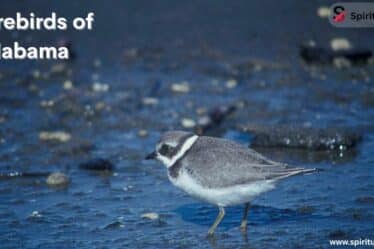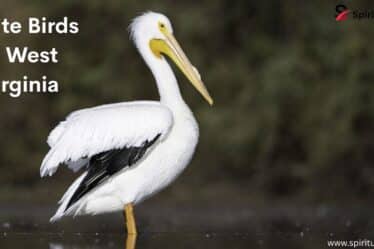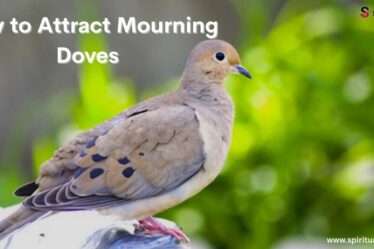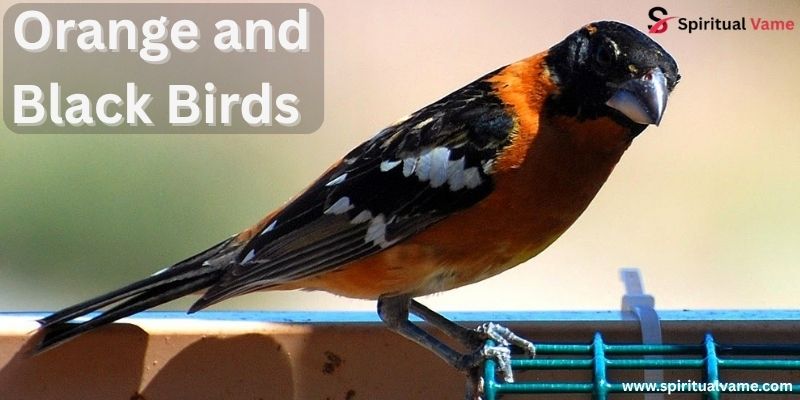
Orange and black birds are some of the most striking creatures in nature. These birds stand out with their vibrant colors, which make them easy to spot in the wild. From bright orange plumage to deep black feathers, they capture the attention of birdwatchers everywhere. Whether you’re hiking through forests, exploring wetlands, or simply observing birds in your backyard, there’s a good chance you’ll encounter an orange and black bird. In this article, we’ll explore various species of orange and black birds, highlighting their unique characteristics and where to find them. Get ready to discover the beauty of these fascinating birds!
List of Birds That Are Orange and Black
The U.S. is home to a wide variety of birds that showcase vibrant orange and black plumage. These include both resident and migratory birds, many of which can be seen in parks, gardens, and wildlife refuges across the country.
African Stonechat
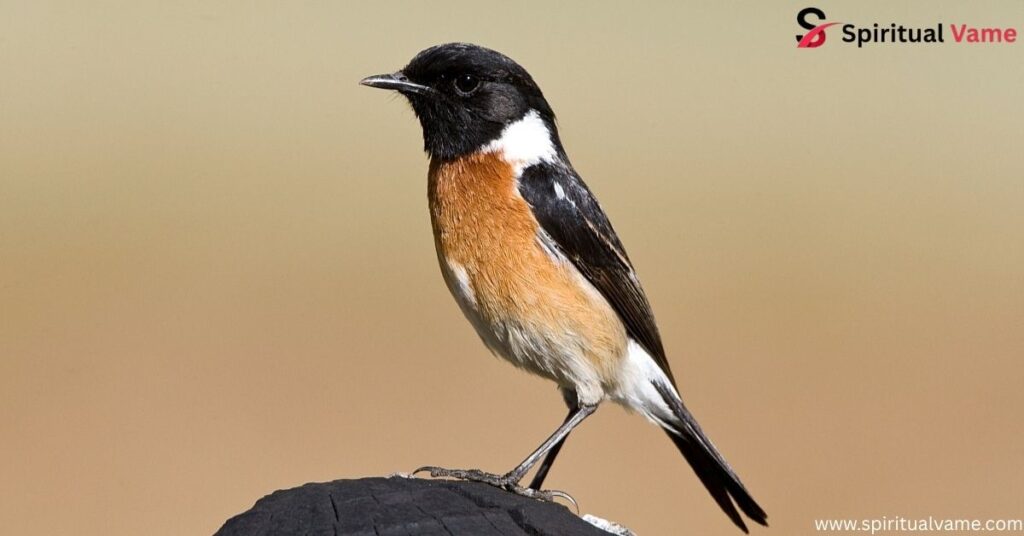
The African Stonechat (Saxicola torquatus) is a small, chunky bird resembling a robin, found across sub-Saharan Africa. Males exhibit a striking combination of black and white plumage with variable amounts of rufous on the underparts. Females are generally dark brown above and pale below. Both sexes display a distinctive white wing patch. These birds inhabit open habitats like grasslands, heaths, marshes, and scrubs, often perching conspicuously. Their song is a quick, jumbled mix of musical and raspy notes .
American Goldfinch
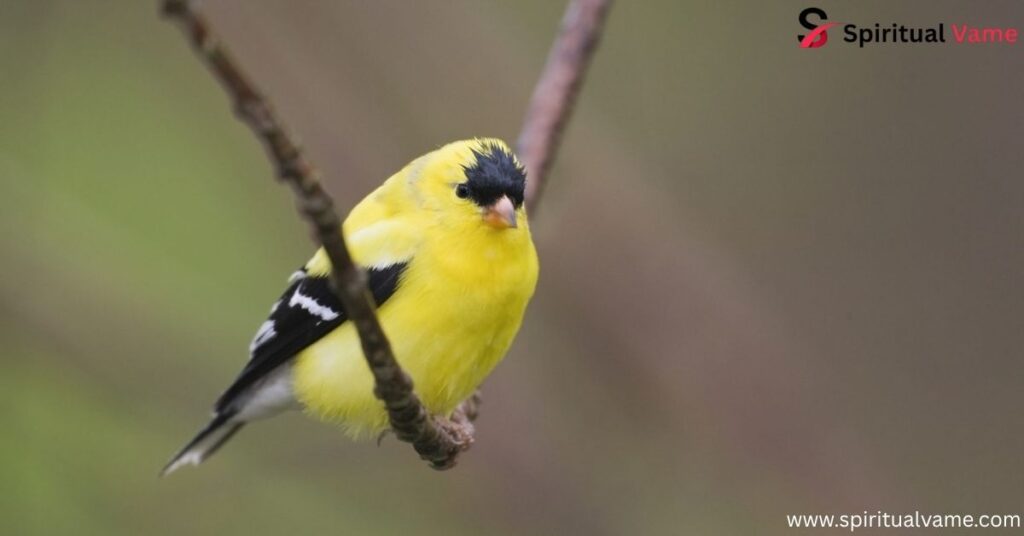
The American Goldfinch (Spinus tristis) is a small finch with a short, conical bill and a short, notched tail. Breeding males are bright yellow with a black forehead and black wings with white markings. Nonbreeding males are a drab, un streaked brown with black wings and two pale wingbars . These birds are common at feeders, especially those filled with sunflower and nyjer seeds. They often flock with Pine Siskins and Common Redpolls.
American Redstart
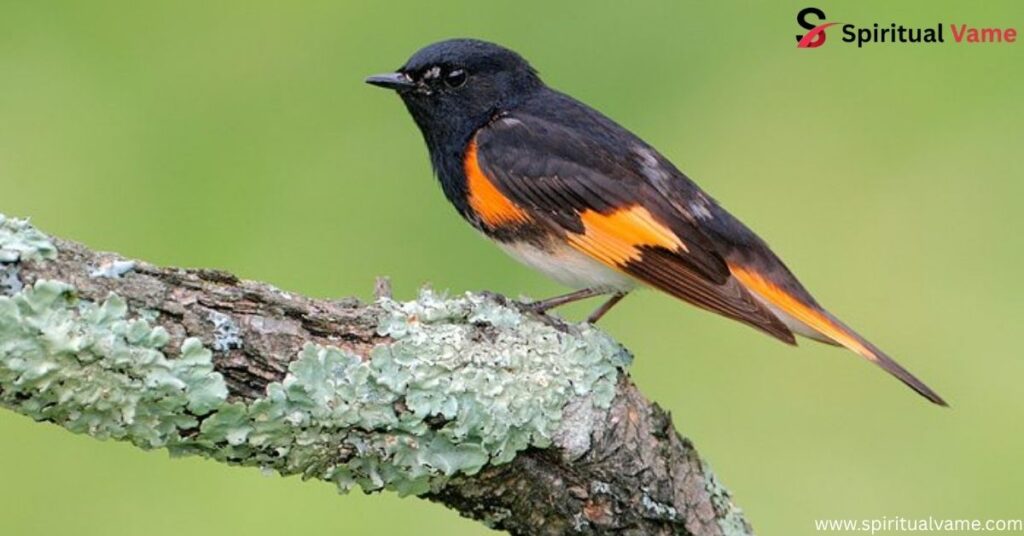
The American Redstart (Setophaga ruticilla) is a lively warbler that hops among tree branches in search of insects. Adult males are coal-black with vivid orange patches on the sides, wings, and tail. Females and immature males have more subdued yellow “flash patterns” on a gray background. These birds nest in open woodlands across much of North America .
American Robin
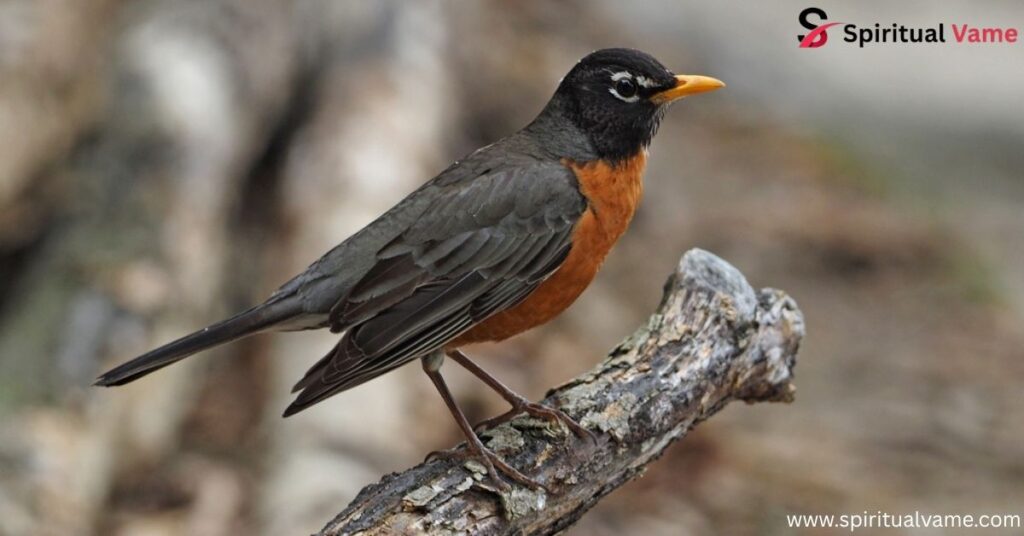
The American Robin (Turdus migratorius) is a migratory bird of the true thrush genus. Named after the European robin for its reddish-orange breast, the American Robin isn’t closely related to it. This familiar bird spreads across North America, spending winters from southern Canada to central Mexico and along the Pacific coast.
Black-and-orange Flycatcher
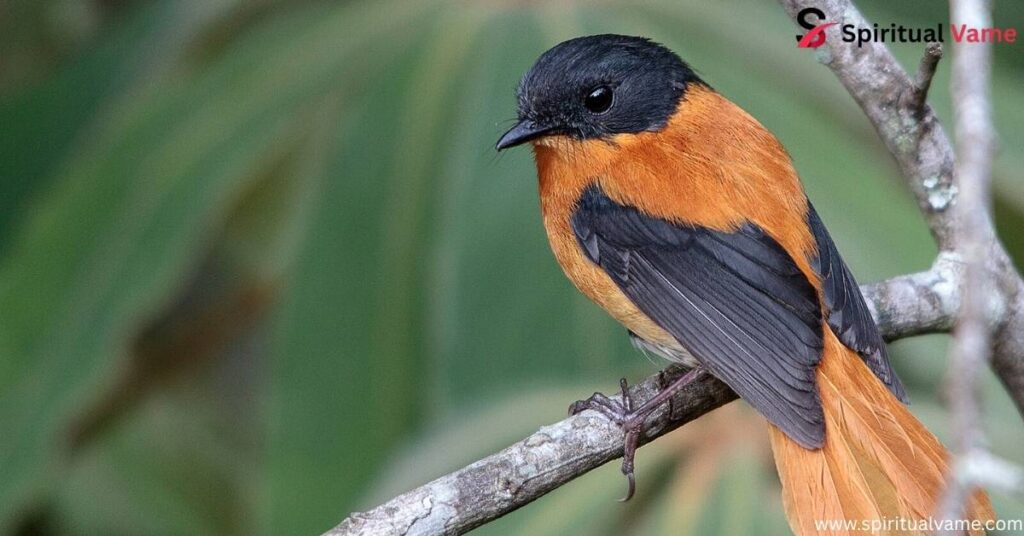
The Black-and-orange Flycatcher (Ficedula nigrorufa) is a tiny, brightly-colored flycatcher endemic to the central and southern Western Ghats in southern India. Males have a black head and back with bright orange underparts, while females are slightly paler, particularly on the head. They inhabit montane shola forests from 1000 meters upwards and have calls consisting of short bursts of buzzy notes .
Blackburnian Warbler
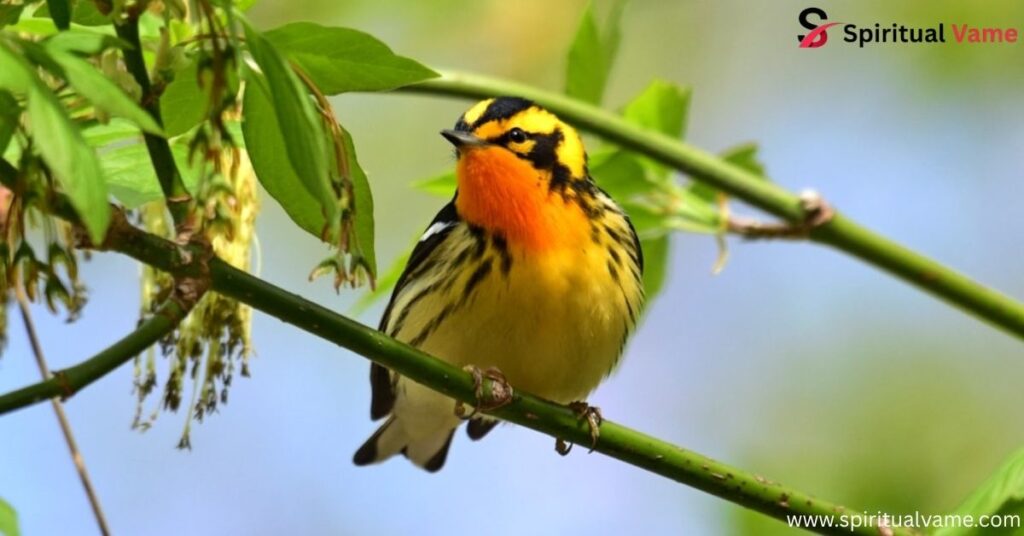
The Blackburnian Warbler (Setophaga fusca) stands out among warblers for its bright orange and black breeding colors. It is the only warbler to bear orange on its throat. These forest-canopy specialists rarely appear at eye level, except during migration. In spring and fall, they join flocks of warblers at key stopover sites, offering a rare chance to spot them up close.
Brambling
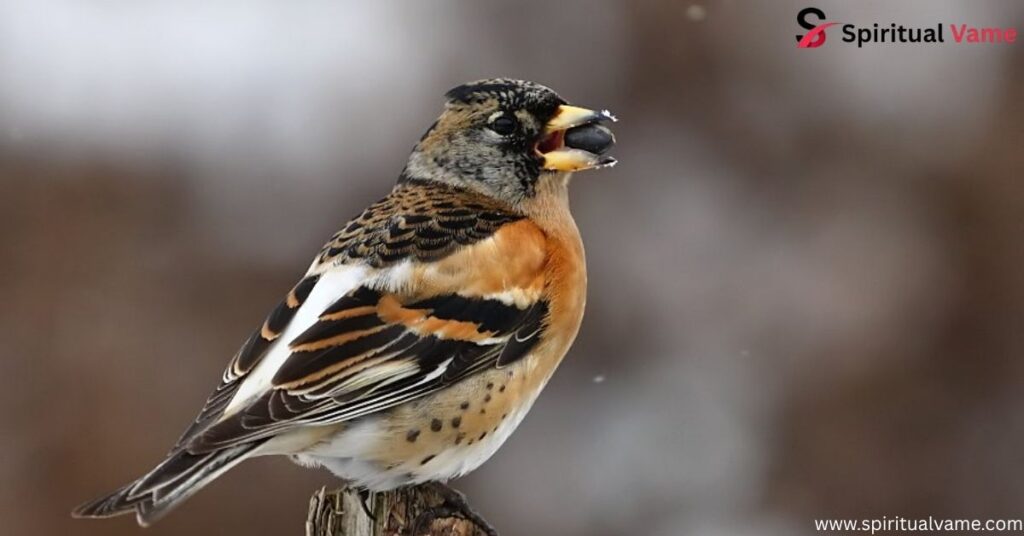
The Brambling (Fringilla montifringilla) is a colorful Eurasian finch that occasionally makes its way to North America during rare irruptive winters. Males in breeding plumage are particularly striking, with a black head, orange breast, and white belly. In winter, their colors are more subdued, but the signature orange on their shoulders and chest remains visible. Bramblings roam mixed woodlands and often forage on the ground with flocks of Chaffinches. Though uncommon in the U.S., birders have spotted them in Alaska and, on rare occasions, farther south during unexpected migration events.
Buff-streaked Chat
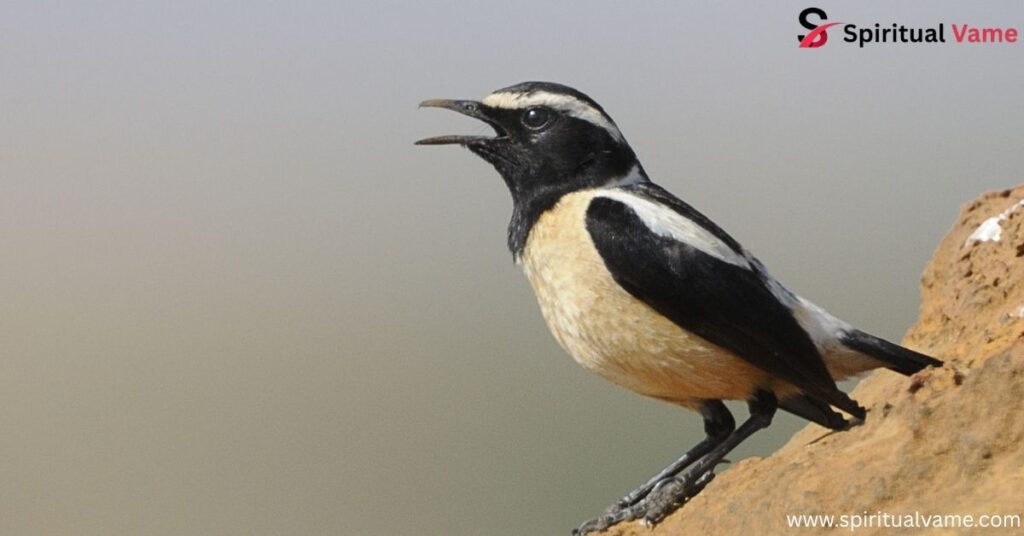
The Buff-streaked Chat (Campicoloides bifasciatus) is a unique African songbird found in southern Africa’s montane grasslands. Males boast a black face and back, with a bold buffy-orange breast and pale belly. The strong contrast in their plumage makes them easy to spot as they perch on rocks or low shrubs. These chats are terrestrial and often hop along the ground in search of insects. Their rich, melodious calls resonate in high-altitude grassland regions.
Bullock’s Oriole
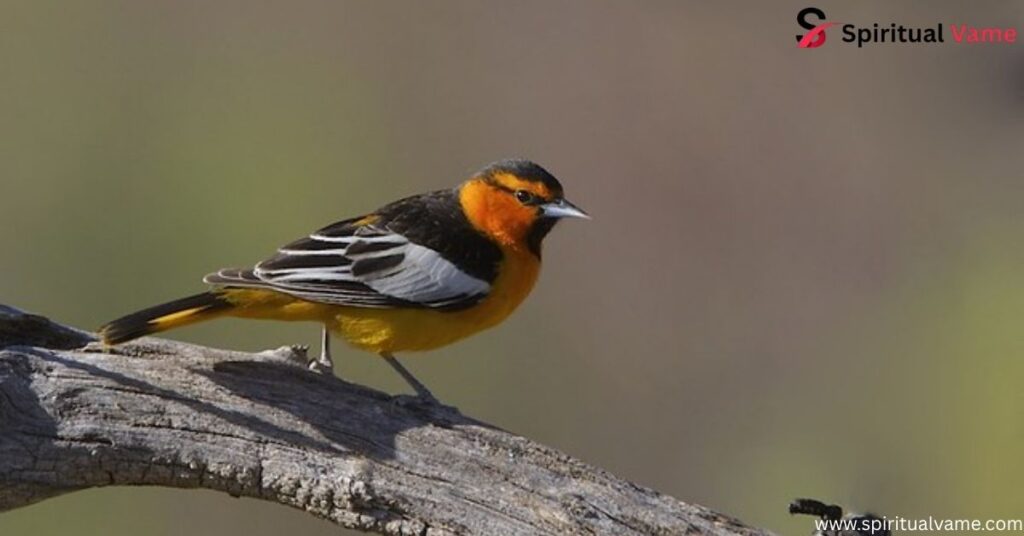
The Bullock’s Oriole (Icterus bullockii) brightens the western U.S. as it flits through open woodlands and riparian areas. Adult males flash bright orange underparts, a black cap and throat, and a bold black eye line. Their white wing patch stands out against jet-black wings and back. Females wear softer colors but show similar patterns. These orioles weave hanging nests and feed on fruit, nectar, and insects.
Canary Islands Stonechat
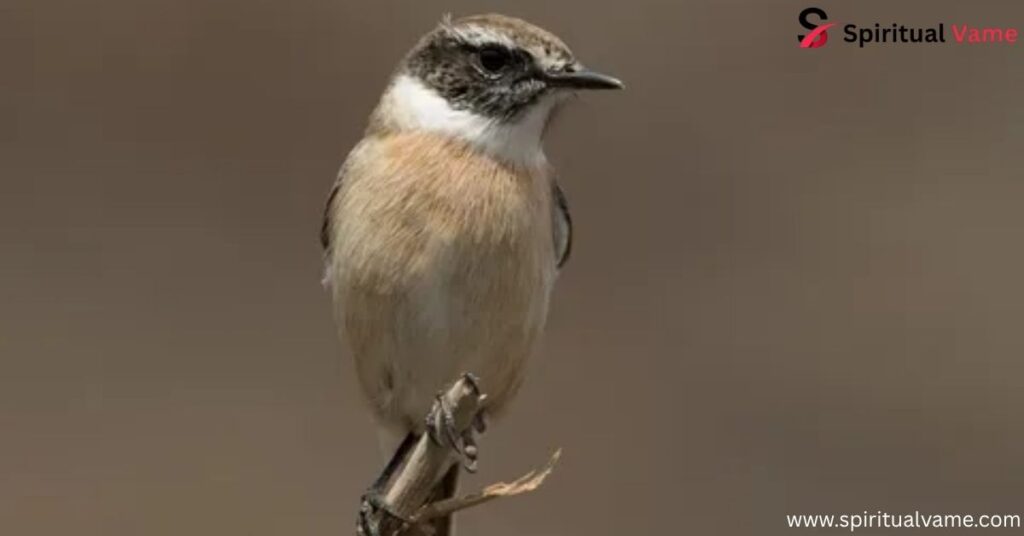
The Canary Islands Stonechat (Saxicola dacotiae), also known as the Fuerteventura Stonechat, is endemic to the island of Fuerteventura. Males show off a striking combination of a black head, white collar, orange chest, and pale belly. Females have a duller appearance but retain the overall orange-and-black theme. These birds prefer arid, shrubby habitats and are considered vulnerable due to their limited range and habitat degradation.
Carolina Wren
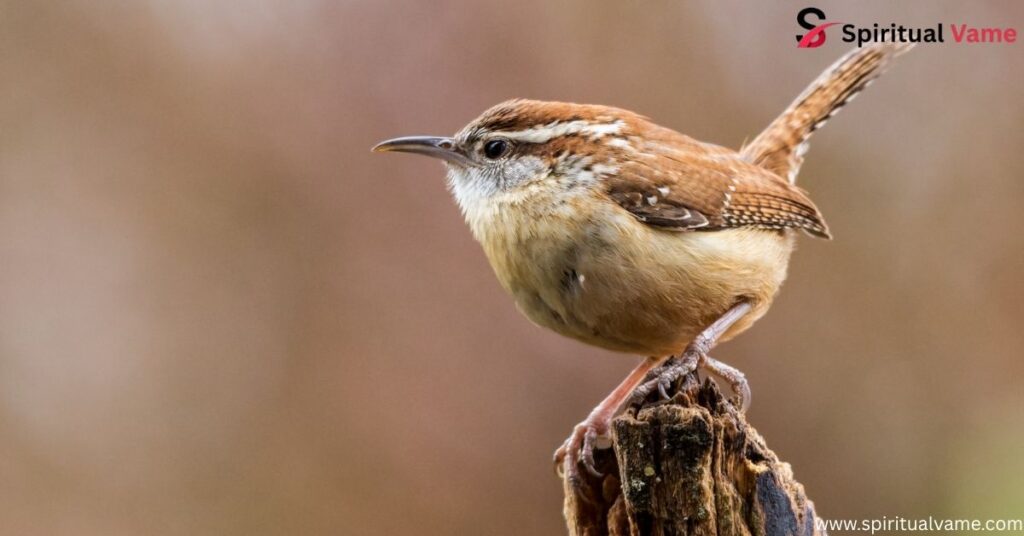
The Carolina Wren (Thryothorus ludovicianus) is a small but bold songbird found throughout the eastern U.S. While not fully orange, its rich rusty-orange flanks and tail contrast beautifully with its cream underparts and dark wings. Known for its loud, musical song, this wren frequents backyards, woodlands, and gardens. They often build nests in hanging planters, garages, and other unusual places near human dwellings.
Common Black Hawk
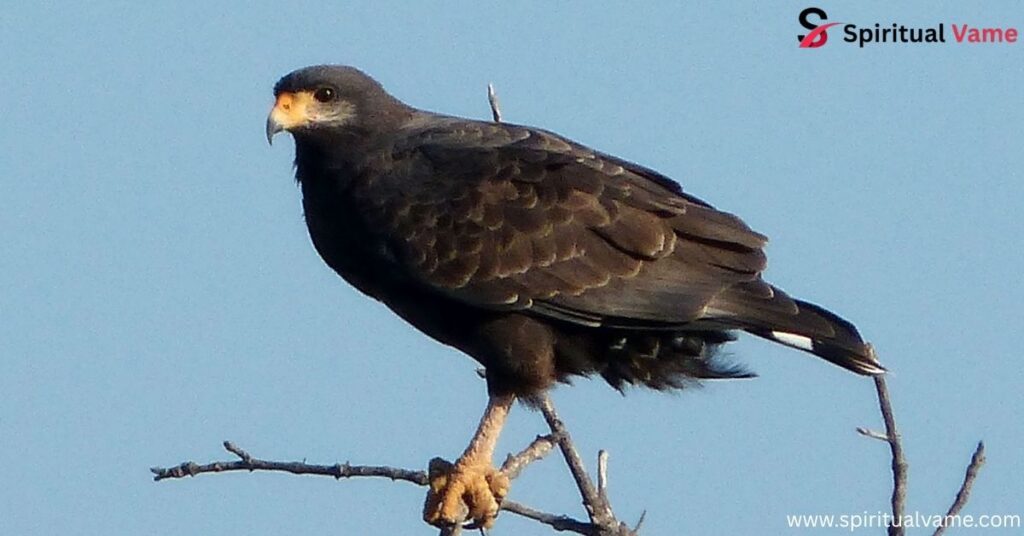
The Common Black Hawk (Buteogallus anthracinus) soars over the southwestern U.S., Mexico, and Central America with broad wings and dark plumage. Its striking orange-yellow legs and beak base add a subtle orange-and-black contrast to its bold, powerful look.It frequents riparian zones, where it hunts for small reptiles, amphibians, and insects. Its loud, high-pitched whistle often gives away its presence before you see it.
Common Myna
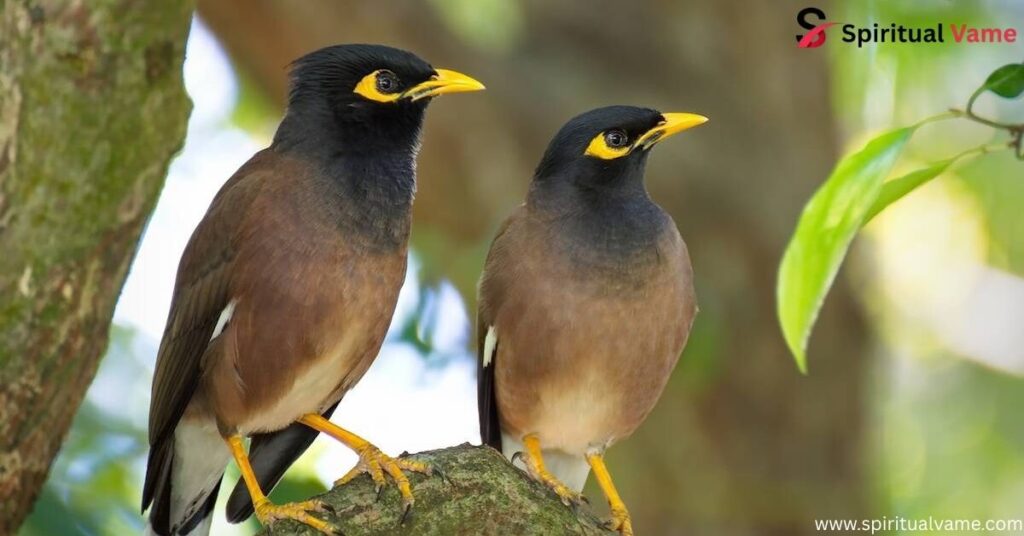
The Common Myna (Acridotheres tristis) is a bold, noisy bird introduced in parts of the U.S., particularly Florida and Hawaii. It’s mostly dark brown with a glossy black head and yellow-orange facial skin, legs, and beak. This contrast gives it a dynamic orange-and-black appearance. Mynas are highly adaptable, often seen in urban settings scavenging for food or nesting in buildings.
Eastern Towhee
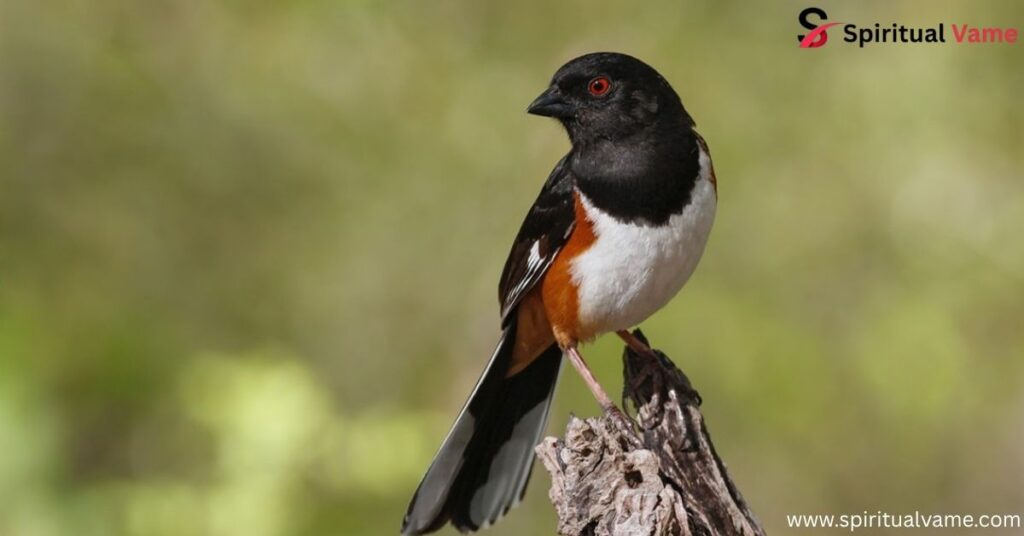
The Eastern Towhee (Pipilo erythrophthalmus) adds bold color to the eastern U.S. with its black upperparts, rufous-orange flanks, and white belly. Males show jet-black plumage and red eyes, while females wear rich brown instead. These sparrows scratch through leaf litter with a signature backward-hop and often sing their sharp “drink-your-tea” tune from dense thickets or forest edges.
European Robin
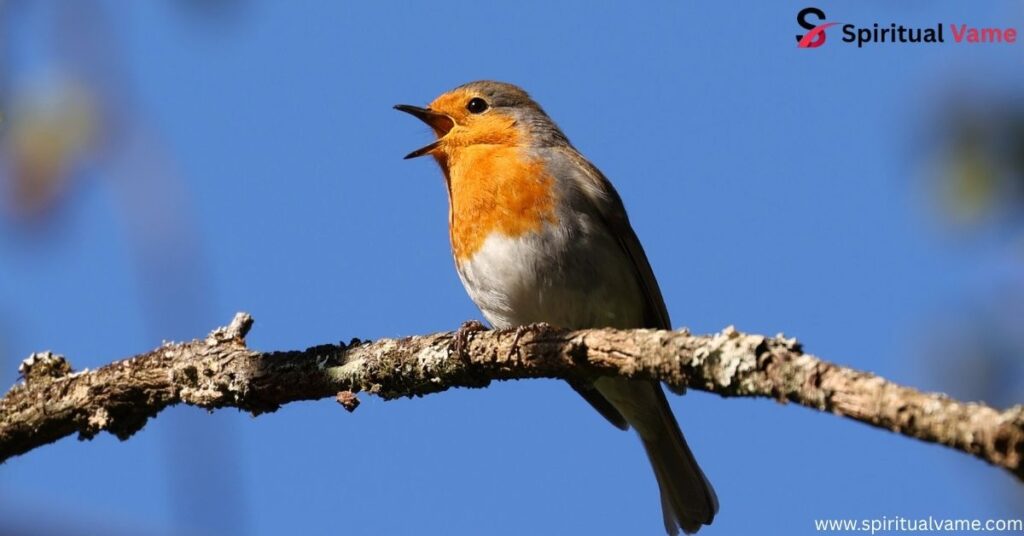
The European Robin (Erithacus rubecula) is a beloved garden bird in Europe, easily identified by its bright orange face and chest, olive-brown back, and large dark eyes. Occasionally appearing as a rare visitor to Newfoundland and other northeastern parts of North America, this robin is unrelated to the American Robin despite the name. Its sweet, high-pitched song is one of the first heard at dawn.
Fieldfare
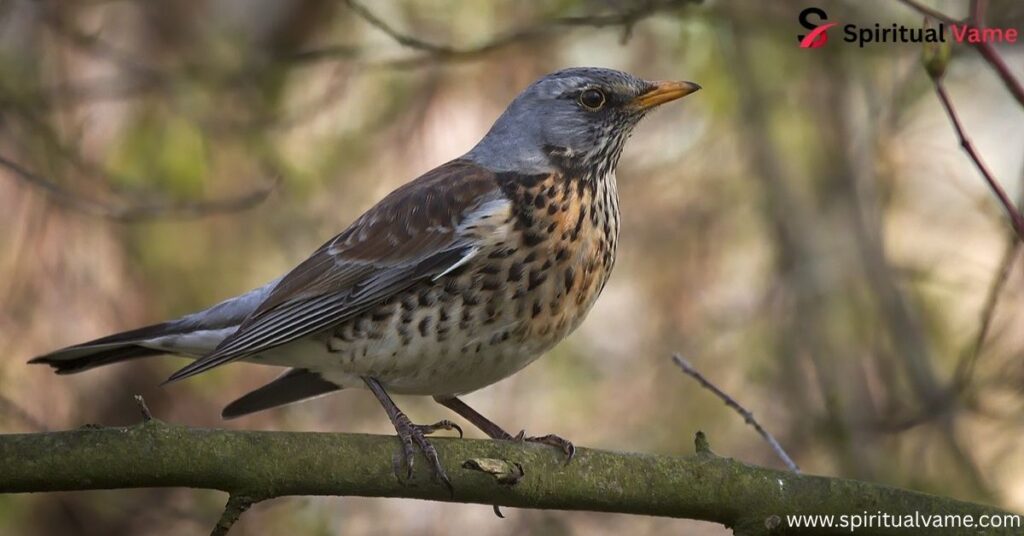
The Fieldfare (Turdus pilaris) is a large thrush from Europe and Asia, with a streaky orange chest, gray head, and black tail. Rare but regular vagrants, they’ve occasionally been observed in northeastern U.S. and Canada. They often travel in large flocks in winter and feed on berries and fallen fruit. Their loud chattering calls and flighty nature make them stand out in the field.
Flame-colored Tanager
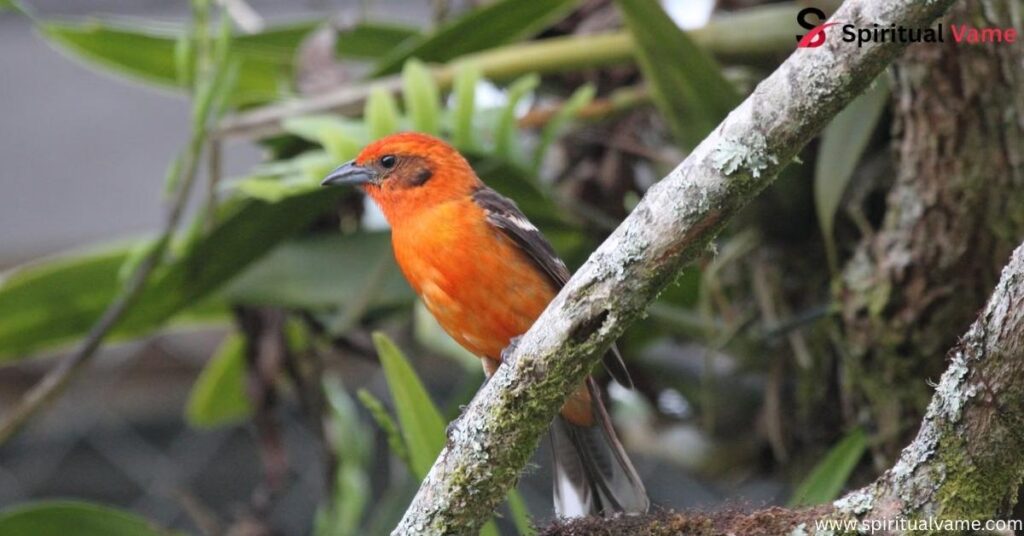
The Flame-colored Tanager (Piranga bidentata) is a Central American species that occasionally wanders into the southwestern U.S., especially southern Texas and Arizona.Males flash brilliant orange-red with black wings and tail, while females glow in yellow-orange tones. These eye-catching birds usually live in montane pine-oak forests and often join mixed-species feeding flocks as they move through the trees.
Hooded Oriole
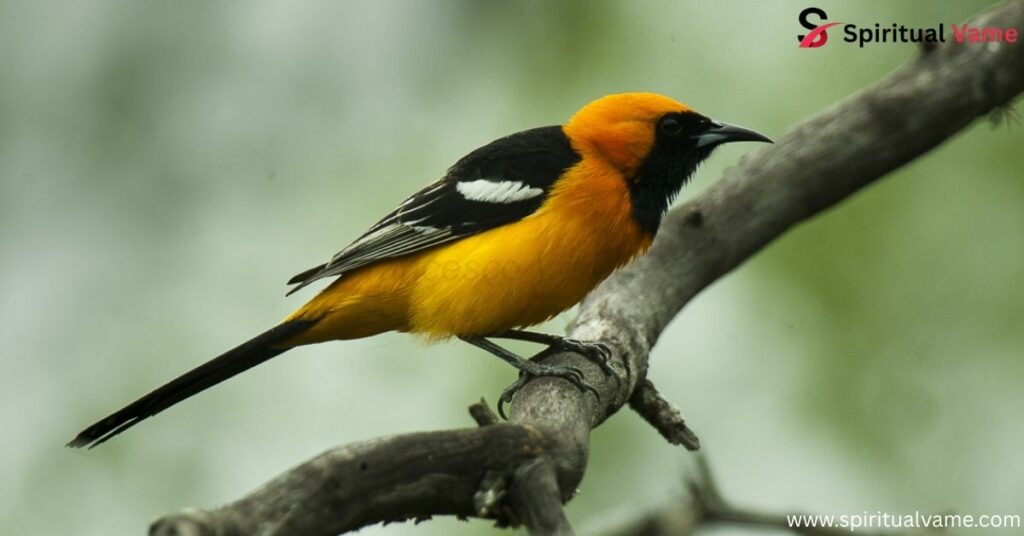
The Hooded Oriole (Icterus cucullatus) is a stunning oriole of the southwestern U.S. and Mexico. Males sport a vibrant orange-yellow body with a black throat, face, and wings. Females are more yellowish overall. Hooded Orioles are often seen hanging from palm fronds or sipping nectar from hummingbird feeders. Their calls are a mix of whistles and chatters.
Inca Tern
The Inca Tern (Larosterna inca) lives along the coasts of Peru and Chile and rarely appears in captivity in the U.S. It stands out with a slate-black body, bright orange beak and feet, and a bold white mustache. While not native to the U.S., its striking look and vivid colors make it unforgettable.
Jerdon’s Bush Chat
Native to India, the Jerdon’s Bush Chat (Saxicola jerdoni) rarely visits the U.S. and usually stays in the scrublands of the Western Ghats. Males show off bold orange and black plumage, with a dark head sharply contrasting their bright body. They often perch in bushes or hop along the ground while hunting insects, their main food source.
Madagascar Stonechat
The Madagascar Stonechat (Saxicola sibilla) lives on the island of Madagascar and thrives in open grasslands and farmland. Males display a bright orange breast paired with a black head and back, creating a bold contrast. While rare beyond their home range, they’ve been recorded in Europe and sometimes appear as strays in North America.
Northern Cardinal
The Northern Cardinal (Cardinalis cardinalis) is one of the most popular and recognized orange and black birds in North America. Males are brilliant red with black markings around their face, while females are a muted brown with reddish tinges. Known for their sweet, melodious songs and bold colors, these birds often visit backyards, woodlands, and gardens throughout the U.S. Their cheerful calls and vibrant plumage make them favorites for birdwatchers year-round.
Olive Warbler
The Olive Warbler (Peucedramus taeniatus) lives in the mountain forests of the southwestern U.S. and Mexico. It shows off an olive-green body with striking orange and black head markings, making it one of the most unusual birds around. Its high-pitched call rings through pine and oak forests, often giving away its presence before it’s spotted.
Orange-backed Troupial
The Orange-backed Troupial (Icterus croconotus) is a striking oriole found in parts of Central and South America. Males have bright orange plumage on their back, contrasting with black wings and tail. Their sharp calls echo across forest edges and open woodlands. While not common in the U.S., birders have spotted them in Texas and other southern border states during migration.
Rufous Hummingbird
The Rufous Hummingbird (Selasphorus rufus) is a small yet striking bird found primarily in the western United States. Known for its bright orange-red plumage, especially in males, the Rufous Hummingbird has a fiery appearance that makes it stand out in gardens and woodlands. These tiny birds are highly territorial and can often be seen darting around feeders, where they feed on nectar, insects, and spiders. Their aerial acrobatics, rapid hovering, and distinctive buzzing sound make them a delight for birdwatchers.
Scarlet Tanager
The Scarlet Tanager (Piranga olivacea) is an eye-catching songbird that graces the U.S. during the spring and summer months. Males are a brilliant scarlet red, with contrasting black wings and tail. Females are more subdued in color, being primarily olive green with yellowish underparts. Found in deciduous forests and woodlands, Scarlet Tanagers are known for their beautiful, high-pitched songs and shy, elusive nature.
Surf Scoter
The Surf Scoter (Melanitta perspicillata) lives along North America’s coastlines and stands out as a bold sea duck. Males show a black body, a white patch on the head, and a bright orange bill, making them among the most colorful sea ducks. They dive in coastal waters to feed on marine invertebrates.Their orange bill is a distinguishing feature that makes them easily identifiable during the winter months when they migrate along the U.S. coast.
Tufted Puffin
The Tufted Puffin (Fratercula cirrhata) is a seabird native to the coasts of Alaska and the Pacific Northwest. Known for its striking black and white plumage, the Tufted Puffin also has bright orange beak and feet, as well as unique yellow tufts of feathers on its head, giving it an unmistakable appearance. These birds are often seen on rocky cliffs, diving for fish in the ocean.
Vermillion Flycatcher
The Vermillion Flycatcher (Pyrocephalus rubinus) shows off its beauty across the southwestern U.S., Mexico, and Central America. Males flash brilliant vermillion plumage and dark wings, creating a striking contrast in open woodlands, gardens, and riversides. These energetic flycatchers dart through the air and call out sharply, often giving themselves away before you see them.
Western Tanager
The Western Tanager (Piranga ludoviciana) fills the western U.S. with color and song during the summer months. Males display fiery orange and yellow plumage with bold black wings and back. They sing cheerful, melodic songs and move through coniferous forests, feeding on insects and berries.
Conclusion
Spotting orange and black birds in the wild is a treat for both novice and seasoned birders. Their vivid colors, diverse calls, and seasonal behaviors provide rich experiences that connect people with nature. These birds can be indicators of habitat health, and many are part of larger ecosystems that include flowering plants, fruit trees, and insect populations. Whether you’re filling your backyard feeder with mealworms and orange slices or hiking through forests with binoculars in hand, there’s always a chance to witness one of these beauties up close.
Birds like the Red-winged Blackbird, American Redstart, Baltimore Oriole, and Eastern Towhee bring vibrant orange and black colors to backyards, forests, and fields across the U.S., each adding its own flash of beauty and charm.Keep your eyes peeled and your ears open—the world of birds is colorful, musical, and endlessly fascinating.

